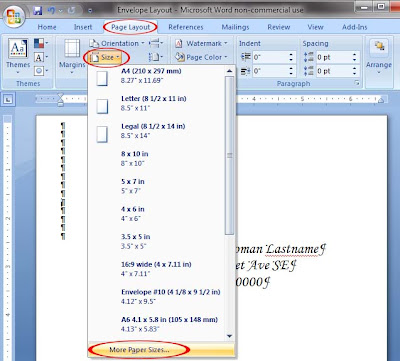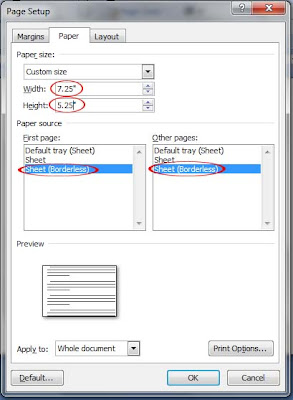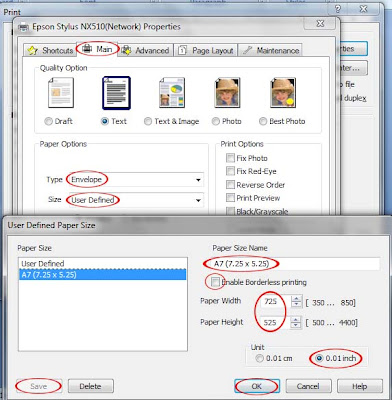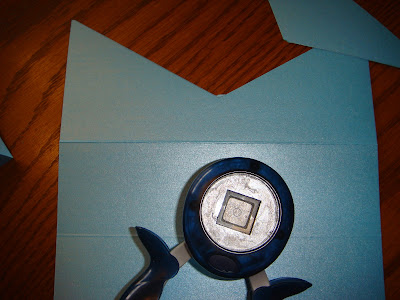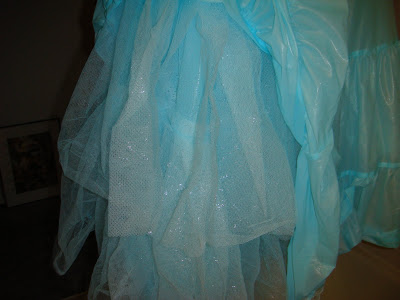Searching through endless amounts of X-mas, birthday and other holiday prints I finally decided on using just plain 'ole silver to line the envelopes for the majority of them. For a select few for our parents, siblings and grandparents I'll be using a pearl colored thick vellum paper that I was able to get 5/$1 at Michaels in the scrapbooking section.

The next part is fairly straight forward but if you want to skip all this nonsense the measurements for the square template for the inserts are 7-1/16" by 6-5/8". This only works if your envelopes are 7-1/4" by 8-3/4" unfolded with about a 5/8" glue strip which is technically an A7 with a straight across flap that I got online from envelope mall. If you don't have that type of envelope the next few paragraphs and pictures are how I got to the template, otherwise skip ahead to the **.
The instructions are really simple and begin with making a tracing template. Start by getting an envelope you don't mind destroying with pencil lead or from cramming the template inside to see if it fits. Open the flap and put the envelope address side up on a piece of cardstock, cardboard from a cereal box or even some thick paper from something like the phone book cover; just don't use corrugated cardboard. Pushing down on the envelope to smoosh it as flat as you can get the sucker, trace to get an outline.

Since this is a template, cut out what you have so far and trim where necessary so you can fit it in there. It doesn't matter at this point if the left and right sides are completely straight but make sure the top of the template isn't too tall.

Next, measure the thickness of the glue strip so you can exclude it from your liner; it's alright if you over compensate for this a little. While I have a flat flap instead of a Euro flap it will be easy for me to just measure a straight line for the glue strip. Those that have a Euro flap might want to make a few marks for where the glue would sit and use the envelope again to trace at those markings.


Insert the template inside the envelope again to make sure the template doesn't cover up the glue strip, trimming where needed.

Lastly, I was unsure about the white space around the liner so I looked up some pictures as well as some of the samples acquired through friends' wedding invitations to find that the insert is just one big square at least for the straight across flap. This was why I wasn't too concerned about the left and right sides were perfectly straight because you'll be cutting them away (same with the Euro flap style) to allow for a border.


So with that, I traced some of the inside of the pocket for a re-inserting reference, eyeballed where I wanted the white space to be and cut the template into a square instead of the outline that it was. Re-insert the template and cut small amounts away until you're satisfied with how the template looks inside the envelope.


*****************************************************************
So with the easiest part done, use your brand new template on your paper and trace out as many as you can get (or need) and cut them out using whatever method you're comfortable with. Make sure to erase the lines after cutting out the inserts if you are using vellum paper or it will show through; you won't have this problem if you're using regular paper.
Trace

Cut

Stack of them

Now for the glue.
Before I decided to slather on a bunch of glue on to my printed envelopes when I didn't have enough to replace them all, I tested the glue. What I was afraid of was having the tacky glue wrinkle or somehow negatively effect the liner or the envelope paper. I was very glad I did because this is what I got:



Gross right?
So I looked around the apartment and my desk at work to find a glue stick. I read a while ago on a help thread that a glue stick would be the best and cheapest way to go if you were worried about wrinkling your paper. You can use double sided tape or glue dots but you can see where the both of those are with thinner paper, plus I can't stand using either of them. This is what I got from the glue stick:

Once I decided on the type of adhesive to use, it was time for the tricky part. Since I didn't have the envelopes from before they were assembled in their current form, I would need to find a way to get the liner into the envelope without destroying the envelope or the liner. This proved to be somewhat difficult, but found that using wax paper made everything easier.
First I put a small strip of glue from the glue stick on the top edge of the liner and aligned it to the glue strip on the envelope:

Next I flipped over the liner and put another line of glue on the bottom edge and then took some wax paper folded it in half and put it over the glue making sure I had enough wax paper that I could fold over to the other side.

With the liner still folded back I put a last strip of glue on the fold of the envelope. This was to prevent the liner from rolling away from the envelope when opening at the flap or from detaching if a letter opener was used to open the envelope.

The next two steps were a little tricky and require patience but you take the liner, roll it up and away from that glue strip you created in the last step and insert it into the envelope. Gently scoot the liner in there and detach it from the glue strip when it gets caught rather than pushing down on that big "bubble" you created.

Smooth the liner down at the glue strip and reach in to grab the wax paper that's attached to the bottom part of the liner. This should roll the liner up to you with the glue side up but be gentle and pull at the wax paper evenly along the width.

Remove the wax paper from the glue and push it back into the envelope, lifting the envelope to make it easier to reinsert and keep the glue from sticking. If you're using thinner paper be nice and coddle it to avoid poking through the paper and don't worry about wrinkling the it a bit because no one will really be seeing this part.

Wipe away any excess glue you see and weigh down the envelopes when you're finished.

After giving the glue enough time to dry go through them and see if any need to be separated or if the pockets accidentally got stuck closed.
That's it! Envelope liners = CHECK!!
